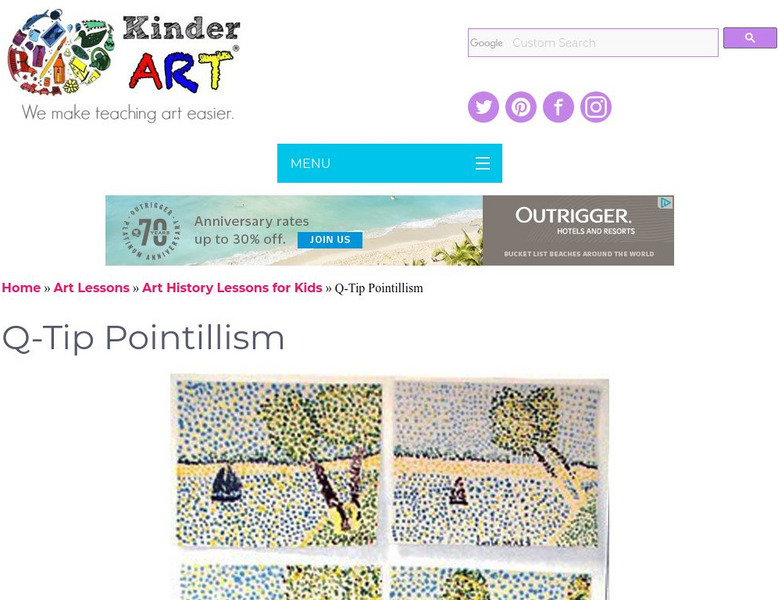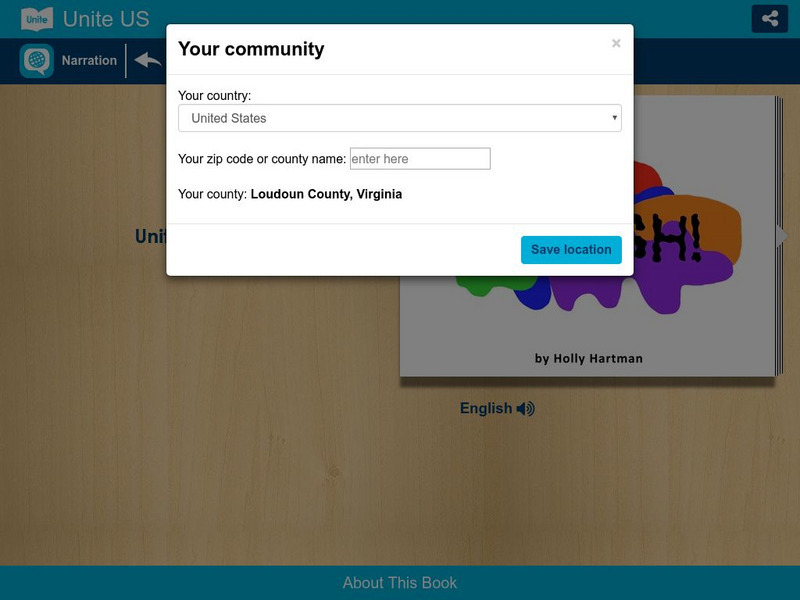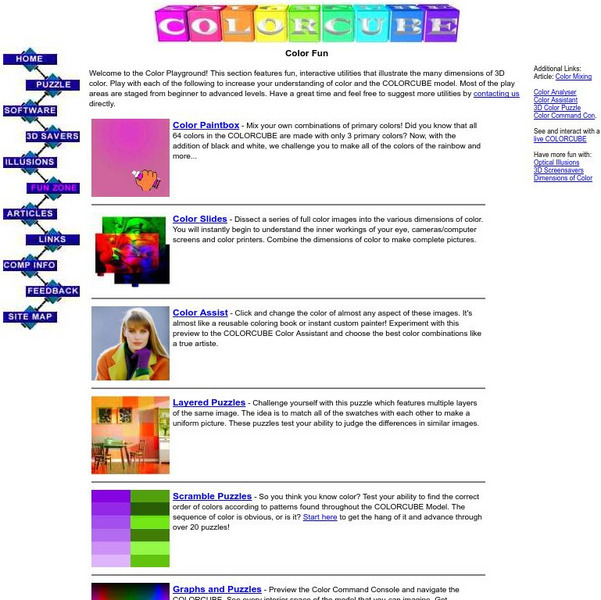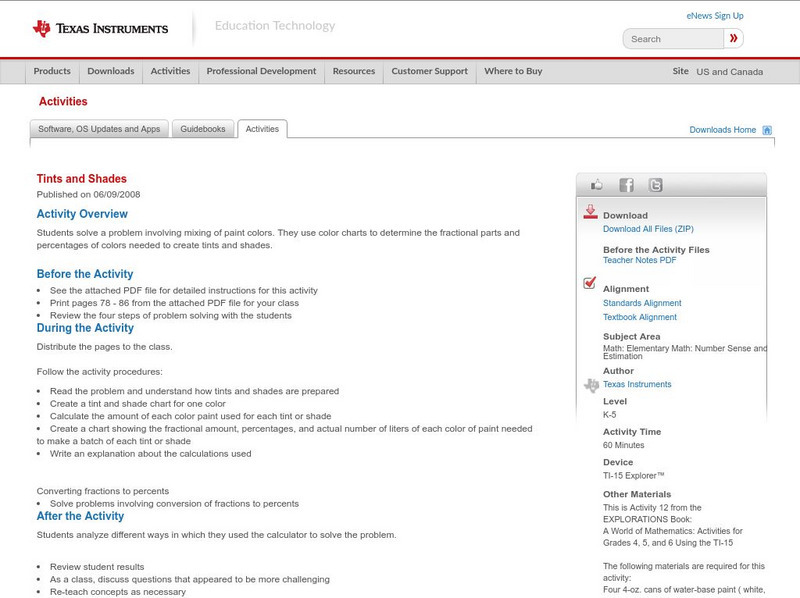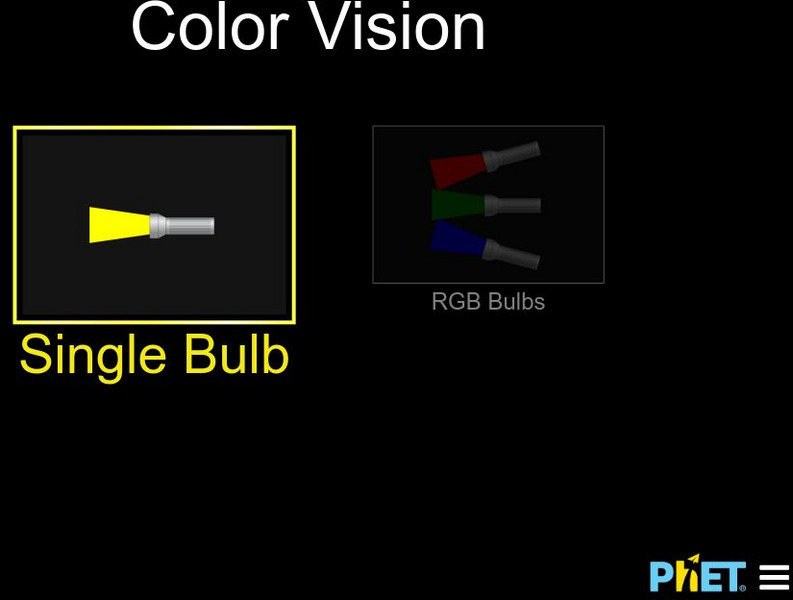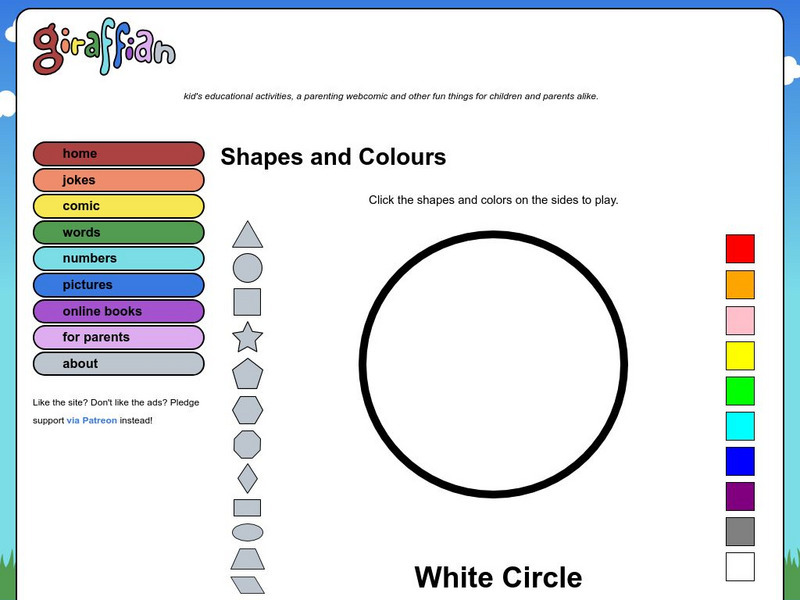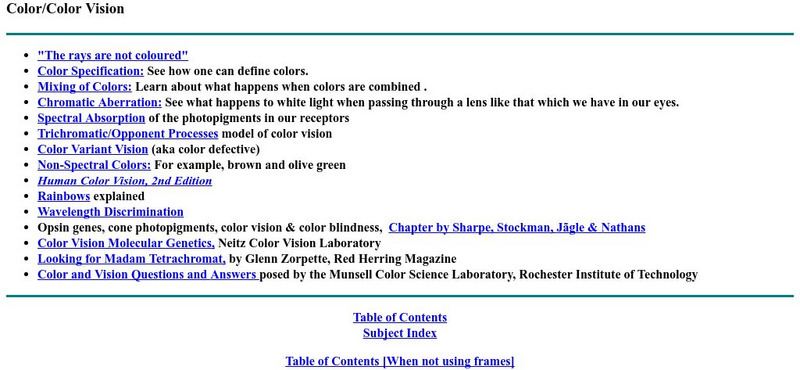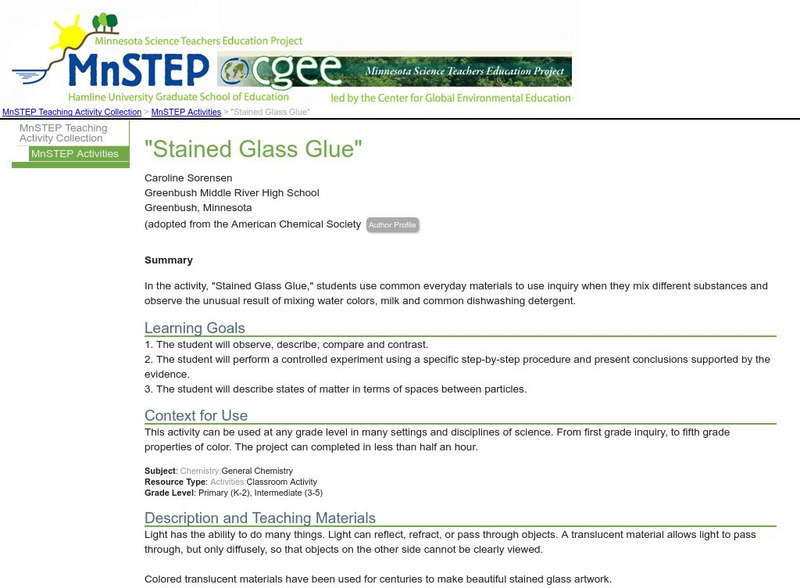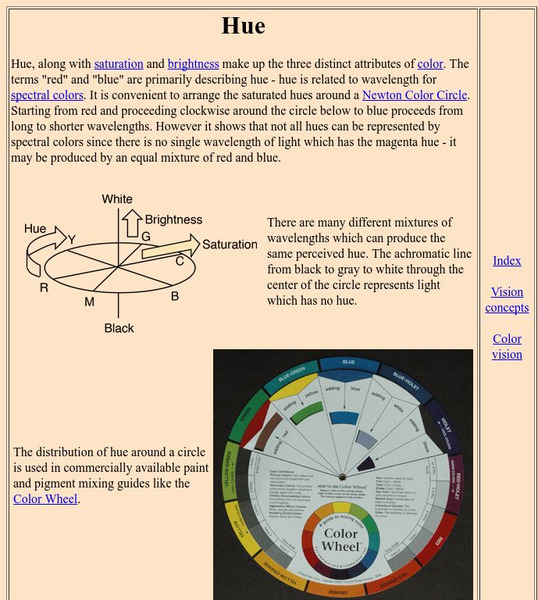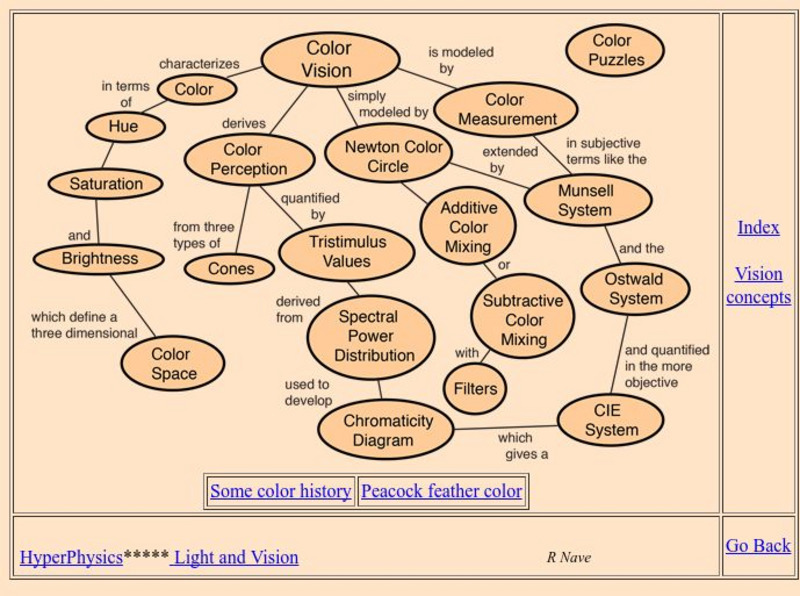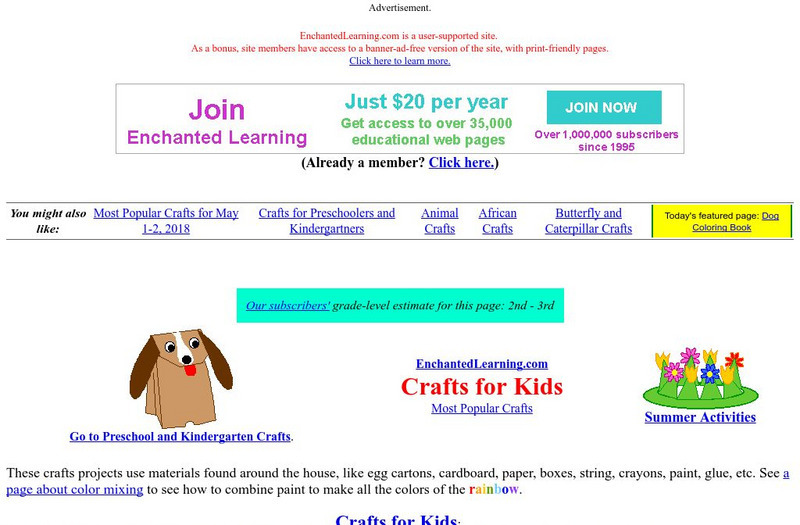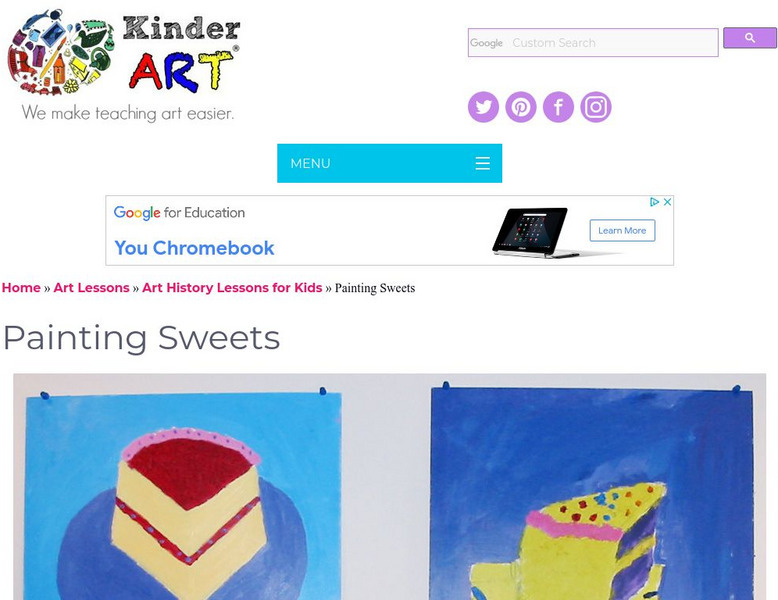Hi, what do you want to do?
NASA
Nasa: The Space Place: Why Is the Sky Blue?
Learn about colors of light by exploring how prisms work. Discover the different colors of the spectrum and how the visible light is what we see.
Other
60 Second Science: Color Exploration I (Primary Colors Lesson Plan)
Discover what primary colors are and explore ways in which red, yellow, and blue can be mixed to create new colors.
Children's Discovery Museum
Children's Discovery Museum of San Jose: Color Blending Top
Put a new spin on blending colors by creating your own spinning top. Mix colors through motion and make this optical illusion spring to life.
Kinder Art
Kinder Art: Dot to Dot Seurat
KinderArt shows how pointillism can be a very creative way to paint. It involves dots, color mixing and divisionism. Students will be enriched by this method created by Georges Seurat.
Unite for Literacy
Unite for Literacy: Create and Play: Squish!
A book about the primary and secondary colors. Includes audio narration in 16 additional languages with text in English.
Other
Color Cube: Color Fun
Six activities sure to engage students of any age! Interactive games and puzzles let you play with color and create your own unique designs!
Texas Instruments
Texas Instruments: Tints and Shades
In this activity, students solve a problem involving mixing of paint colors. They use color charts to determine the fractional parts and percentages of colors needed to create tints and shades. [Requires Adobe Reader.]
University of Saskatchewan (Canada)
University of Saskatchewan: Value & Color
Basic color theory is discussed in relaton to computer art applications. Illustrated.
Other
Watercolor painting.com: Color Theory
A great introduction to color theory with colorful illustrations and examples.
TeachEngineering
Teach Engineering: Rgb to Hex Conversion
Students practice converting between RGB and hexadecimal (hex) formats. They learn about mixing primary colors in order to get the full spectrum of colors and how to average pixel values.
University of Colorado
University of Colorado: Ph Et Interactive Simulations: Color Vision
Make a whole rainbow by mixing red, green, and blue light. Change the wavelength of a monochromatic beam or filter white light. View the light as a solid beam, or see the individual photons.
wikiHow
Wiki How: How to Create Realistic Flesh Tones
A great formula for getting a Caucasian skin tone by mixing paint colors. Adjustments to the formula will result in other skin tone variations.
Other
Art With Mrs. Filmore: 1st Grade Art Lessons
This site offers a variety of art lessons that use various media. Each project includes instructions and pictures of the students' completed artwork.
Other
Giraffian Kid's Stuff: Shapes and Colours
Students can mix and match shapes and colors in this simple learning activity.
York University
York University: Color and Color Vision
York University provides an index page to several other pages on the topic of color and color vision. The pages are part of an online "book." Many graphics and explanations.
Science Education Resource Center at Carleton College
Serc: "Stained Glass Glue"
In the activity, "Stained Glass Glue," students use common everyday materials to use inquiry when they mix different substances and observe the unusual result of mixing water colors, milk and common dishwashing detergent.
Physics Aviary
Physics Aviary: Color Matching Game
This game has been built to show students that they can make any color they want by mixing different amounts of red, blue and green.
Science Education Resource Center at Carleton College
Serc: Rainbow Milk
This activity is designed for students to learn that primary colors mixed together make secondary colors. They will also experiment with how fat and soap molecules repel each other in water.
Alabama Learning Exchange
Alex: Leo Lionni's Little Blue and Little Yellow
Students will use Leo Lionni's literature and his website to learn about the author, mix primary colors, summarize and rewrite a story, and use graphing skills to determine the classes' favorite color.
Georgia State University
Georgia State University: Hyper Physics: Characterizing Color
This site from Georgia State University discusses the meaning of the terms hue, saturation and brightness. Thorough, meaningful explanations and outstanding graphics.
Georgia State University
Georgia State University: Hyper Physics: Color Vision Concepts
An indexing page from Georgia State University for a variety of other pages associated with color vision. Pages are filled with meaningful graphics and thorough explanations.
Enchanted Learning
Enchanted Learning: Crafts for Kids
Choose from dozens of simple crafts including activities for the holidays, animal crafts and much more.
ClassFlow
Class Flow: Color Theory
[Free Registration/Login Required] This flipchart introduces students to the concept of primary, secondary and tertiary colors. The lesson concludes with an activity in which students create their own color wheel from mixing colors and...
Kinder Art
Kinder Art: Sweet Stuff
Art students will learn about visual balance, visual texture, and textural paint by following the example of Wayne Thiebaud, famous for his dreamy 1960s paintings of cakes.








